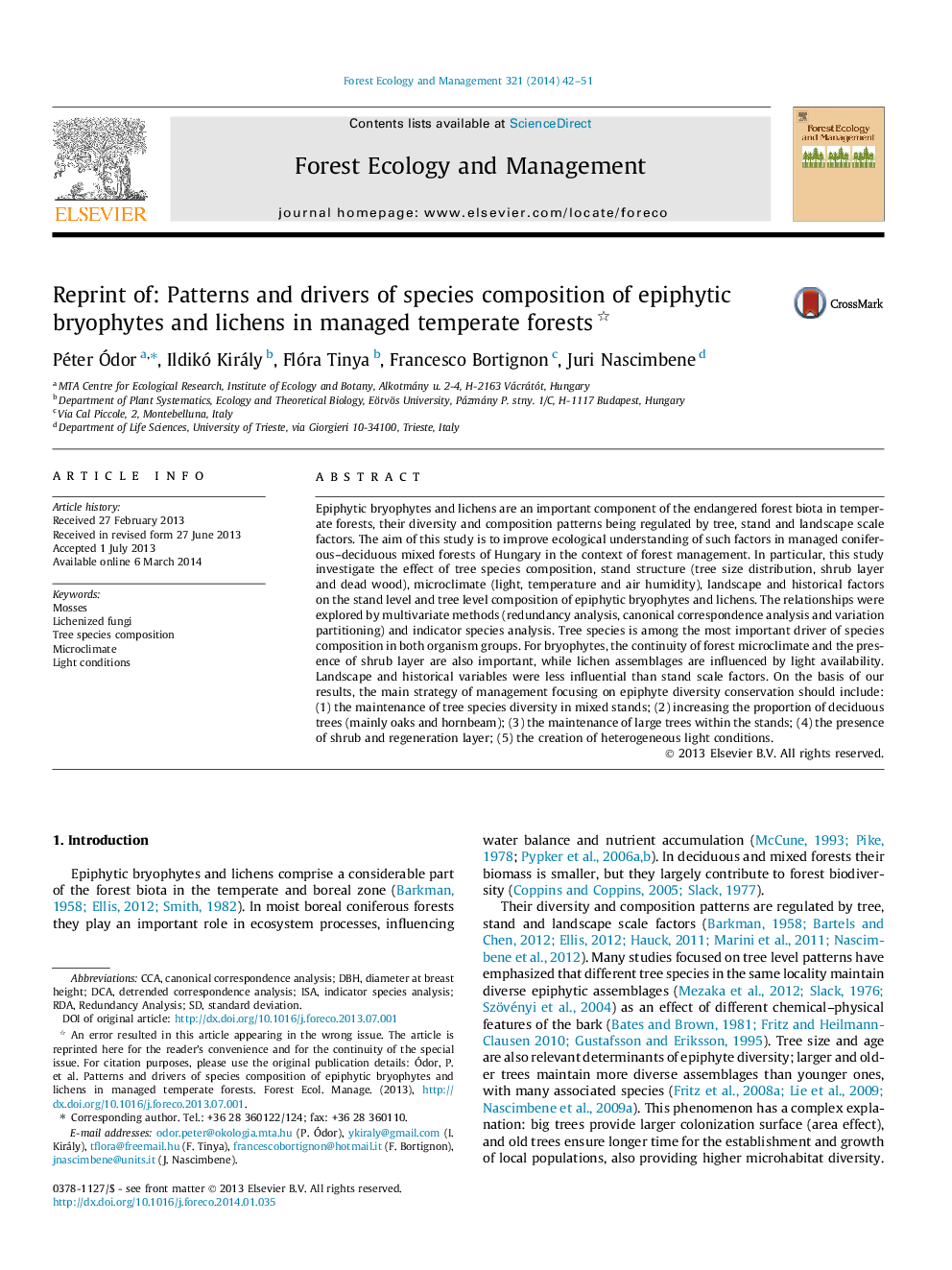| کد مقاله | کد نشریه | سال انتشار | مقاله انگلیسی | نسخه تمام متن |
|---|---|---|---|---|
| 86472 | 159191 | 2014 | 10 صفحه PDF | دانلود رایگان |
• Environmental constrains was assessed on epiphytic bryophytes and lichens.
• Different tree species maintain different epiphyte assemblages.
• Oak is a key species for bryophytes, while hornbeam for lichens.
• Bryophytes are sensitive to microclimate continuity, lichens to light conditions.
• Landscape and historical variables are less influential than local conditions.
Epiphytic bryophytes and lichens are an important component of the endangered forest biota in temperate forests, their diversity and composition patterns being regulated by tree, stand and landscape scale factors. The aim of this study is to improve ecological understanding of such factors in managed coniferous–deciduous mixed forests of Hungary in the context of forest management. In particular, this study investigate the effect of tree species composition, stand structure (tree size distribution, shrub layer and dead wood), microclimate (light, temperature and air humidity), landscape and historical factors on the stand level and tree level composition of epiphytic bryophytes and lichens. The relationships were explored by multivariate methods (Redundancy Analysis, canonical correspondence analysis and variation partitioning) and indicator species analysis. Tree species is among the most important driver of species composition in both organism groups. For bryophytes, the continuity of forest microclimate and the presence of shrub layer are also important, while lichen assemblages are influenced by light availability. Landscape and historical variables were less influential than stand scale factors. On the basis of our results, the main strategy of management focusing on epiphyte diversity conservation should include: (1) the maintenance of tree species diversity in mixed stands; (2) increasing the proportion of deciduous trees (mainly oaks and hornbeam); (3) the maintenance of large trees within the stands; (4) the presence of shrub and regeneration layer; (5) the creation of heterogeneous light conditions.
Journal: Forest Ecology and Management - Volume 321, 1 June 2014, Pages 42–51
